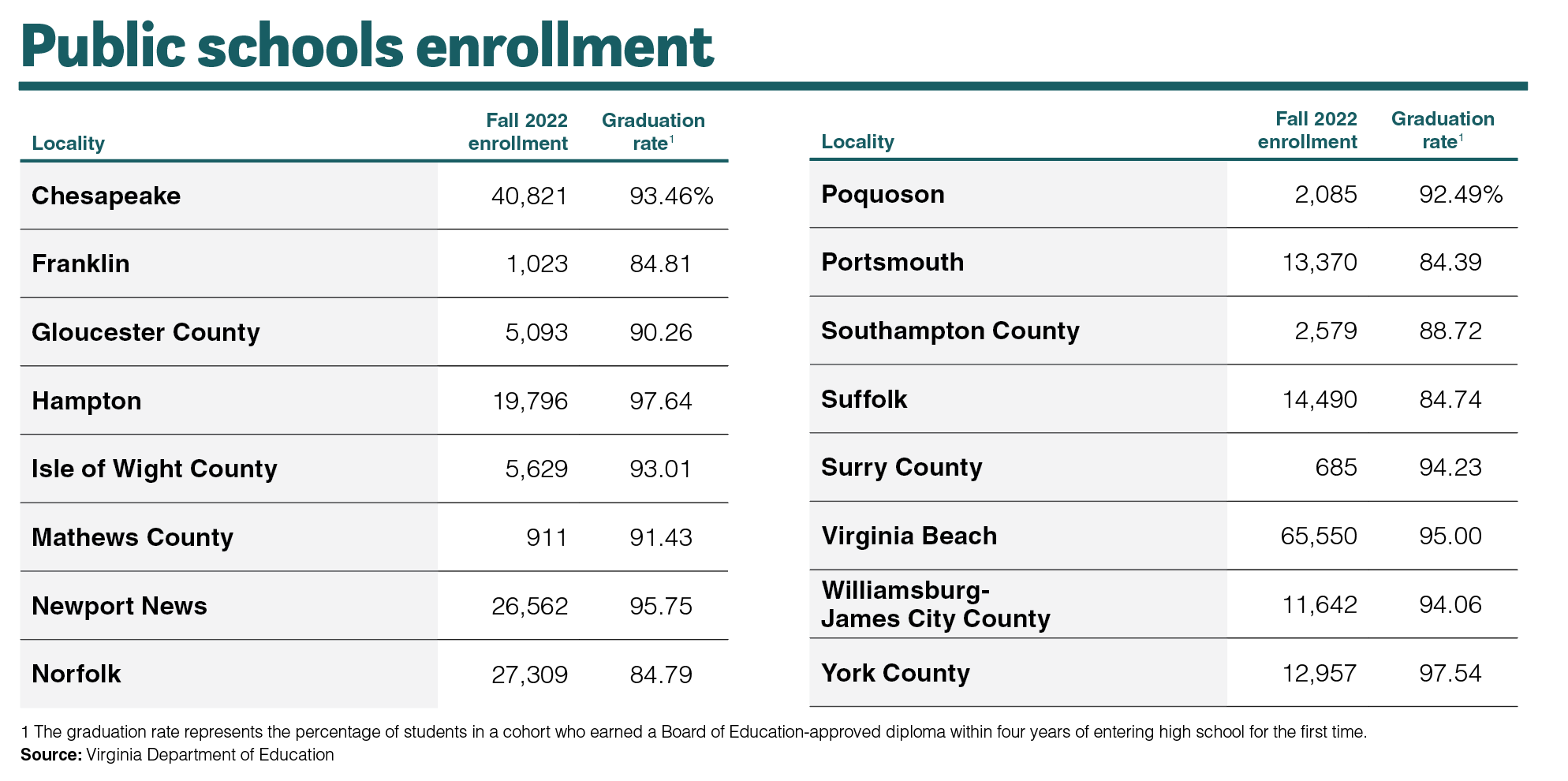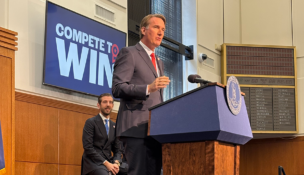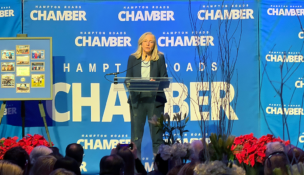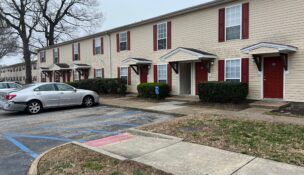Teamwork makes dreams work
Research consortium boosts health studies
Joyce Wise Dodd //September 28, 2023//

Dr. Carolina Casellini at Eastern Virginia Medical School received a grant from the Hampton Roads Biomedical Research Consortium to develop an AI-powered nutrition app for people at risk for Type 2 diabetes. Photo by Mark Rhodes

Dr. Carolina Casellini at Eastern Virginia Medical School received a grant from the Hampton Roads Biomedical Research Consortium to develop an AI-powered nutrition app for people at risk for Type 2 diabetes. Photo by Mark Rhodes
Teamwork makes dreams work
Research consortium boosts health studies
Joyce Wise Dodd //September 28, 2023//
Talk with researchers a few minutes, and they’ll explain how many stages it takes for an idea to become a medical treatment, and for the treatment method to be tested, approved and brought to market. In many cases, it can take several years.
Founded in June 2020, the Hampton Roads Biomedical Research Consortium is a state-sponsored partnership among Eastern Virginia Medical School, Norfolk State University, Old Dominion University and Sentara Health that helps accelerate biomedical research from the idea stage through testing and ultimately to commercial sales. The focus is on resolving health disparities, including among Hampton Roads residents.
It’s a bit like a startup accelerator for biomedical researchers. One of the first teams to receive a grant from HRBRC’s Collaboration Accelerator Fund is run by
Dr. Carolina Casellini, an assistant professor of internal medicine at EVMS and a rheumatologist. She received $107,859 from the collaboration fund in 2021 and focused on producing an artificial intelligence-powered nutrition platform to improve the metabolic health of primarily Black residents of Hampton Roads who are at risk of diabetes.
With the HRBRC funding, Casellini ran a pilot that began in December 2022 and concluded last spring. Early on, she connected with WelFore Health, a nutrition app startup founded by Norfolk husband-and-wife team Ed and Ann-Marie Stephens. The app, available for desktop computers and smartphones, uses AI tools to create specialized nutrition plans for people who need to change their diets to address diabetes and other health issues. What’s different is that the Stephenses’ app takes cultural backgrounds and food preferences into consideration.
In the pilot, half of the 49 participants received recipes designed by nutritionists, and the other half — the control group — ate as usual.
“The end goal is to address obesity and teach them how to eat healthily,” Casellini explains, “and they develop this intervention with targeted questions about what they like eating.” Participants also have access to short videos on cooking methods, shopping for groceries on a tight budget and using food diaries.
Although the pilot ended in May, Casellini and WelFore will continue working together for the next three years, conducting further research. Earlier this year, Casellini received a $600,000 award from the American Diabetes Association to continue the project.
Later this year, they plan to work with 160 more participants — Black men and women at risk of diabetes between the ages of 25 and 65. That’s an adjustment from the pilot, which included older adults, but Casellini said participants above age 65 tended to struggle more with the technology than younger participants did. She’s also considering recruiting members from the same families, because it’s easier to follow new recipes and eat healthy if more than one person in a household is doing it.
The HRBRC startups — research teams led by a clinician or tenured or tenure-track faculty member from ODU, EVMS, NSU or Sentara — have multiple sources of funding. They can win grants from the Collaboration Accelerator Fund that provide enough money to partner with an outside business, another academic institution or government agency. In 2021 and 2022, the CAF funded nine projects, including Casellini’s team, for a collective $857,000, and in May, nine more research teams received $1.05 million. There’s $15 million in federal funding as well, awarded to researchers at the partnering institutions for their research projects.
In a sense, the federal money and the Collaboration Accelerator Fund provide the projects with seed funding, explains Heather Richter, the consortium’s interim executive director.
With the funding, researchers can connect with business and public-sector partners, launch pilot studies and produce research — and ultimately either reach the marketplace or get more funding to grow their research findings. Often, area residents benefit from the studies too, Richter says.
“Metro ministers have been educated, and a community advisory board, including independent social workers, have taken up the cause for helping to reach out to the communities,” Richter says.
During the 2019 General Assembly session, a bipartisan group of legislators established the HRBRC and allocated it $4 million in general funds and $20 million in capital funds for fiscal year 2020, chiefly to support collaboration among EVMS, ODU and Sentara and address health needs and disparities in Hampton Roads, as well as helping to commercialize research.
“This coming year is pretty exciting,” Richter says, since EVMS is about to merge with ODU in January and create the Eastern Virginia Health Sciences Center at ODU. Also underway is the ONE School of Public Health, a partnership among the medical school, ODU and NSU forged in 2021. “The faculty will drive research into health and well-being.”
In April, the consortium took another step toward community outreach by opening its own space in Portsmouth at the ODU Tri-Cities Center, which houses four 3-D printers, computers and other equipment for creating medical prototypes.
Patrick Ball, the center’s core facilities manager, holds up a plastic spinal bone model as an example of what a printer can produce.
“Our printers are a little bit different. They can print things that are hard like bone or soft like flesh,” he explains, and although the printed items won’t actually be implanted into a person’s body, medical schools could use the prototypes to train future doctors.
The research teams — or startups, as Richter calls them — generally conduct their work while funded by the CAF for
6 to 12 months, depending on researchers’ goals. Sometimes it’s as simple as outreach for clinical projects that meet community needs, or maybe the goal is to bring a treatment to the commercial market.
“I think the common thread of our projects is to improve health equities,” Richter says. “Education, workforce development, understanding the environment — that’s all within our wheelhouse. How are we building access to health care? Everything to build a healthy ecosystem is here.”
F



















